
Carmel-by-the-Sea, commonly known simply as Carmel, is a city in Monterey County, California, located on the Central Coast of California. As of the 2020 census, the town had a total population of 3,220, down from 3,722 at the 2010 census. Situated on the Monterey Peninsula, Carmel is a popular tourist destination, known for its natural scenery and rich artistic history.

The Pacific Repertory Theatre is a non-profit California corporation, based in Carmel-by-the-Sea, California, that produces theatrical productions and events, including the annual Carmel Shakespeare Festival. It is one of eight major arts institutions in Monterey County, as designated by the Community Foundation of Monterey County, and is supported in part by grants from the David and Lucile Packard Foundation, The Shubert Foundation, the Berkshire Foundation and the Monterey Peninsula Foundation.

The Forest Theater is an historic amphitheater in Carmel-by-the-Sea, California. Founded in 1910, it is one of the oldest outdoor theaters west of the Rockies. Actor/director Herbert Heron is generally cited as the founder and driving force, and poet/novelist Mary Austin is often credited with suggesting the idea. As first envisioned, original works by California authors, children's theatre, and the plays of Shakespeare were the primary focus. Since its inception, a variety of artists and theatre groups have presented plays, pageants, musical offerings and other performances on the outdoor stage, and the facility's smaller indoor theatre and school.
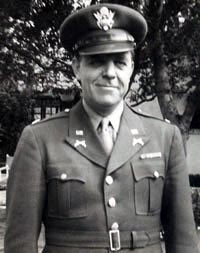
Lewis Byington Ford was a Monterey Peninsula real estate developer who developed Pebble Beach and Carmel Woods. Ford established the Carmel Valley Airport, the first airpark of its kind in the United States, and developed a nearby business district. He created the Carmel Realty Company, was a cartoonist, poloist, baseball player, coach in the Carmel Abalone League, and acted in and directed over 45 plays. Ford was involved in the social circle and society of Monterey Peninsula.
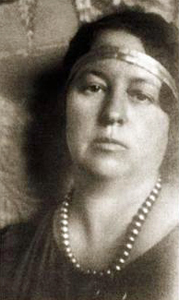
Jessie Hazel Arms Botke was an Illinois and California painter noted for her bird images and use of gold leaf highlights.

The Sunset Center is located in Carmel-by-the-Sea, California, United States. It is a performing arts center which features concerts, comedy, theatre, and dance. Formerly the Sunset School, the site was purchased by the city of Carmel in 1965 with the plan to develop it into a cultural center. It is home to the Carmel Bach Festival. It was listed on the National Register of Historic Places on January 9, 1998.
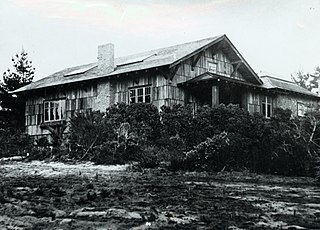
The Carmel Arts and Crafts Club was an art gallery, theatre and clubhouse founded in 1905, by Elsie Allen, a former art instructor for Wellesley College.
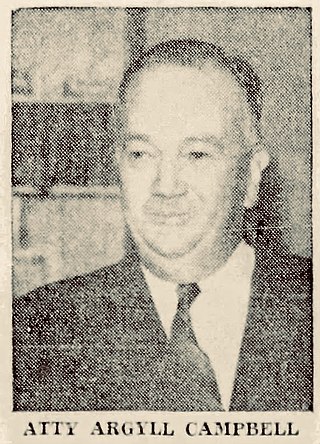
Argyll Campbell was city attorney for Carmel-by-the-Sea, California from 1920 to 1937. He was former chairman of the California Democratic Party to elect governor Culbert Olson. Campbell was a leader in Monterey Peninsula civic life for twenty-eight years. He was known for his efforts to "keep Carmel from radical change."

Edward Gerhard Kuster was a musician and attorney from Los Angeles for twenty-one years before coming to Carmel-by-the-Sea, California in 1921. He became involved in theater and establish his own theatre and school. He built the Theatre of the Golden Bough in 1924, and a second theater, the Golden Bough Playhouse in 1952. Kuster directed 85 plays and acted in more than 50 roles in the 35 years he lived in Carmel.
The following is a timeline of the history of Carmel-by-the-Sea, California, United States.
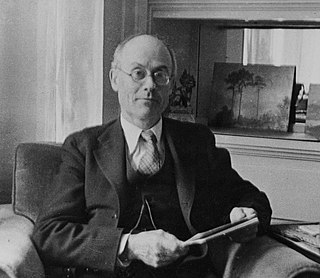
Louis Stanislaus Slevin, was an American photographer, known for his black-and-white images of the Monterey Peninsula. He was a pioneer in the early days of Carmel-by-the-Sea, California, the first to open a general merchandise store in 1905, the first postmaster, first express agent, and first city treasurer. His photographs of Carmel from 1903 to 1835 are recognized as a record of Carmel's past. His photo collection is housed at the Bancroft Library, University of California, Berkeley.

Carmel Point also known as the Point and formerly called Point Loeb and Reamer's Point, is an unincorporated community in Monterey County, California, United States. It is a cape located at the southern city limits of Carmel-by-the-Sea and offers views of Carmel Bay, the mouth of Carmel River, and Point Lobos. Carmel Point was one of three major land developments adjacent to the Carmel city limits between 1922 and 1925. The other two were Hatton Fields, 233 acres (94 ha) between the eastern town limit and Highway 1, and Carmel Woods, 125 acres (51 ha) tract on the north side.

Joseph W. Hand, was an early pioneer businessman, real estate agent, leader in civic affairs, actor, and first president of the Forest Theater in Carmel-by-the-Sea.

Ira Mallory Remsen , known locally as Rem Remsen, was an American painter, playwright and Bohemian Club member. He was the son of Dr. Ira Remsen chemist and former president of Johns Hopkins University. Remsen was the author of children's plays notably Inchling and Mr. Blunt, he produced at the Forest Theater in Carmel-by-the-Sea, California in the 1920s. His studio on Dolores Street became the permanent home for the Carmel Art Association in 1933.

Charles King Van Riper was an American newspaperman, writer, and playwright, best known for writing short stories for nationally circulated magazines, and as the founder of the Abalone League, the first organized softball league in the Western United States. He went on to build a successful ship-model shop and showroom in Vineyard Haven, Massachusetts. 285 of his ship models and archival materials are now part of the South Street Seaport Museum.
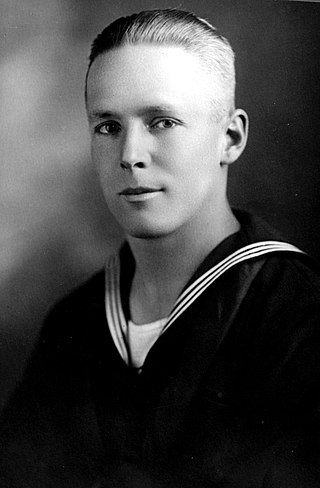
Ernest Seraphin Schweninger was an American actor, realtor, and grocer in Carmel-by-the-Sea, California. He became owner of Carmel's first Bakery and the Schweninger's Grocery Store. Schweninger was a founding member of the Carmel American Legion Post No. 512 and the Abalone League. He appeared in many of the early plays at the Forest Theater and Theatre of the Golden Bough. He became a partner and sales manager for the Carmel Land Company that helped develop Hatton Fields, southeast of Carmel-by-the-Sea.

Hatton Fields is an unincorporated community southeast of downtown Carmel-by-the-Sea in Monterey County, California, United States. Homes have views of Carmel Valley, Point Lobos, and Carmel Bay. The residential neighborhood is bordered by Rio Road to the south, Hatton Road to the north, Hatton Canyon to the east, and Junipero Street to the west. The terrain is rolling and naturally landscaped with mature oaks, redwoods, and Monterey Pine trees. Carmel High School, Carmel Mission, and Flanders Mansion are landmarks in this neighborhood. Carmel Mission and Flanders Mansion are two properties that are listed on the National Register of Historic Places. The Mission Trail Nature Preserve runs adjacent to Hatton Fields. Homes are part of the Carmel Unified School District.

Laura W. Maxwell, also known as Laura Maxwell, was an American artist. She played a role in the artistic community of Carmel-by-the-Sea, California, where she settled. Maxwell contributed to the establishment of the Carmel Art Association. Maxwell's artistic ability extended beyond the borders of Carmel and the Monterey Peninsula, as her floral paintings, marines, and landscapes in both oil and watercolor gained recognition in various art centers worldwide. Her works reached audiences as far as Paris, France, and made their way to exhibitions in Peking, China.
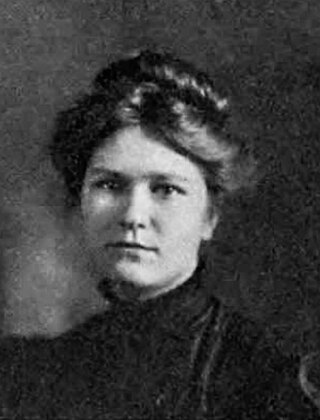
Dene Denny was an American musical theater producer who, along with co-founder Hazel Watrous, established the Denny-Watrous Management. They played pivotal roles in the founding of the Carmel Music Society, the Carmel Bach Festival, and Monterey's First Theater. Their residence, the Denny-Watrous Studio , served as a hub for hosting musical concerts and lectures.
John B. Jordan, was an American hotelier, actor, and politician. In 1922, Jordan purchased the Pine Inn in Carmel-by-the-Sea, California. Jordan was a figure in both politics and theater. His involvement included an eight-year tenure on the city council, a two-year stint as mayor, and roles as a director for both the Forest Theater and the Carmel Arts and Crafts Club.






















